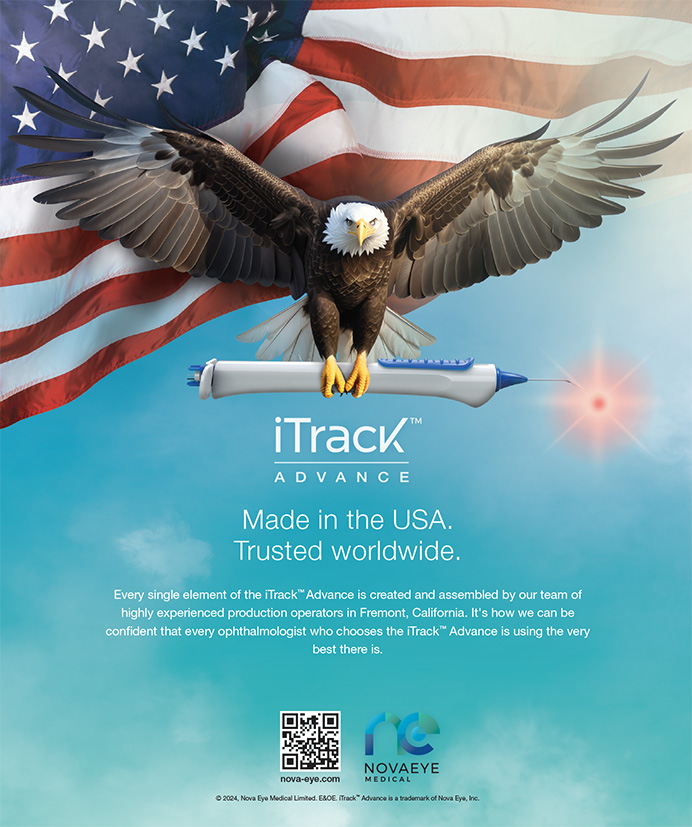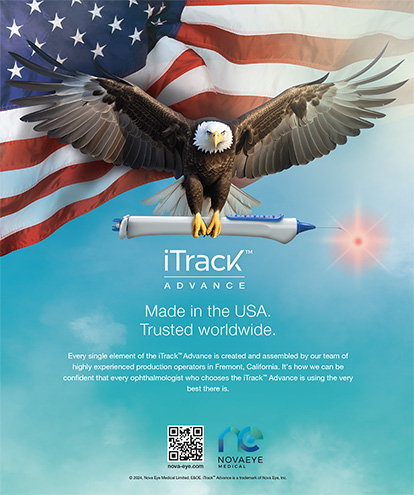Since you first entered practice, which surgical technique has had the biggest impact on vision?
In my opinion, the answer to that question is endothelial keratoplasty. When I started practicing ophthalmology, patients with endothelial dystrophies and diseases had to have full-thickness grafts transplanted. Today, performing Descemet stripping automated endothelial keratoplasty and Descemet membrane automated endothelial keratoplasty with partial-thickness grafts is routine. These procedures offer patients visual rehabilitation with minimal astigmatism in a matter of weeks. They are able to return to their productive lives with better vision and a greatly diminished lifetime risk of a ruptured globe.
How do you manage patients with unrealistic expectations?
I try to provide real-life examples of what can be expected after a surgical procedure. For instance, if a patient is undergoing cataract surgery and wishes to have a presbyopia-correcting IOL implanted, I explain that his or her need for glasses will be reduced but not eliminated. I am also careful to keep a written record of the conversations I have with my patients as well as a carefully documented informed consent if surgery needs to be performed for medical reasons. If the procedure is not essential, such as a refractive surgical procedure like LASIK or refractive lens exchange, I do my best to avoid operating on patients with unrealistic expectations.
What is your advice to young ophthalmologists, particularly women, who are new to practice? I think that it is important for young ophthalmologists to find a practice situation that suits their lifestyle. Find partners and people with whom you enjoy spending your workday. Especially for women, joining a group of egocentric men will lead to endless frustration and less productivity. Be sure that your compensation plan is equal to that of newly employed male physicians, especially if there are no women in the group. I think that communication is equally important for relationships with patients, fellow physicians, and staff members.
What is the mission of SightLife, and what are your responsibilities as a global partner to this organization?
SightLife is a nonprofit, global health organization and the largest eye bank in the United States. Its mission is to eliminate corneal blindness worldwide. To achieve this goal, the organization partners with a country's local eye banks; provides expertise on tissue donation, procurement, evaluation, and distribution; and brings in experts to train surgeons in corneal transplant procedures on a local, sustainable level. SightLife does not promote the concept of mission trips, where a team of surgeons travels to a location, performs a number of cases, and leaves, because often there is a lack of follow-up care that can potentially leave patients in a worse position. Rather, we promote the “teaching the person to fish” concept of sustainability and partner with existing groups to pool and grow resources for promoting corneal transplants in that particular locale.
As a member of SightLife's Medical Advisory Board and a part of the global team, I am helping to create systems by which to train surgeons and build the public's awareness of our programs and assist with their development.
You enjoy athletic activities, including competing in triathlons. What are some ways that you motivate yourself to finish a race in physically challenging moments?
One needs to physically prepare for a race by putting in the time, building a training base, and working on endurance. During the race, it is especially important to remain clear mentally and emotionally and to draw strength from inner motivation and positive self-talk. Allowing yourself to set reasonable, small goals (such as reaching the next buoy in the case of swimming or the next mile marker in the case of cycling or running) can break the race down into more manageable components. This strategy helps me to avoid feeling overwhelmed by the process of completing a race. Sometimes, extra Gu (energy gels) or hydration allows me to focus and summon the strength to continue, especially on a long endurance ride. I may draw motivation from thinking about a worse scenario. I will often think to myself, “If my friend can get through her chemotherapy, then I can finish this silly race and support her.” This kind of thinking can help me put things into perspective and motivate me to complete the task at hand. And yes, I do sprint at the end!


